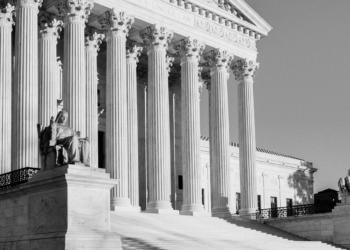In April 2016, the Department of Labor (DOL) issued the “Fiduciary Duty Rule” which greatly expanded the number of financial and insurance professionals that were defined as fiduciaries. Although the Fiduciary Duty Rule was not fully implemented, many individuals and firms began preparing for the new regulatory regime. This new duty would have opened the door to potential liability, increased compliance costs, and changed the market for investment and retirement services. Critics of the Fiduciary Duty Rule may no longer have to worry after the U.S. Court of Appeals for the Fitch Circuit vacated the rule entirely in a recent decision: Chamber of Commerce of United States of Am. v. United States Dep’t of Labor, 885 F.3d 360 (5th Cir. 2018).
The Definition of Fiduciary Under the DOL’s 1975 Rule
Before the Fiduciary Duty Rule was issued, many financial professionals, brokerdealers, and insurance agents were not considered fiduciaries under the definition in the Employee Retirement Income Security Act (ERISA) and the Internal Revenue Code. Pursuant to a 1975 rule, the DOL implemented a five-part test considering a person to be an investment-advice fiduciary under ERISA and the Code if that person (1) renders advice or makes recommendations on investing, purchasing, or selling securities or other property; (2) on a regular basis; (3) according to mutual agreement between the person and the plan; the advice (4) serves as a primary basis for investment decisions with respect to plan assets; and (5) is individualized based on the particular needs of the plan. 29 C.F.R. § 2510.3-21(c)(1) (2015). This test was intended to incorporate the common law concept that a fiduciary duty exists when there is a special relationship of trust and confidence between the fiduciary and the client. In doing so, the 1975 rule drew a line between financial professionals and investment advisors (often fee-based advisors) that regularly provided advice to the client for investment decisions and those financial professionals, like broker-dealers, whose advice was only incidental to investment decisions or involved one-time transactions like IRA rollovers.
The Impact of the Fiduciary Duty Rule
In an effort to protect consumers, the Fiduciary Duty Rule removed the “regular basis” and “primary basis” criteria used in the five-part test articulated in the 1975 rule. With some exceptions, the Fiduciary Duty Rule meant that virtually all financial and insurance professionals who did business with ERISA plans and IRA accounts were fiduciaries even in one-time, commission- based transactions. Professionals who previously were required to make “suitable” investment recommendations were held to the higher standard to act in the “best interest” of their clients.
The Fifth Circuit Vacated the Fiduciary Duty Rule
The Fifth Circuit recently vacated the Fiduciary Duty Rule in a March 15, 2018, decision. Chamber of Commerce, 885 F.3d at 388. In a 2-1 decision, the Fifth Circuit held the DOL’s expansion of the definition of “fiduciary” was not authorized under ERISA. Although the 10th Circuit upheld the Fiduciary Duty Rule on more narrow grounds just two days before the Fifth Circuit’s decision, the 10th Circuit’s ruling did not address the legality of the DOL’s interpretation of the definition of fiduciary. Mkt. Synergy Grp., Inc. v. United States Dep’t of Labor, 885 F.3d 676, 681 (10th Cir. 2018). Despite this apparent circuit split, the Fifth Circuit’s vacatur may have nationwide effect because courts have the authority to “set aside agency actions.” 5 U.S.C. § 706(2). Further, a vacatur prevents a ruling or judgment from “spawning any legal consequences.” Kelso v. U.S. Dep’t of State, 13 F. Supp. 2d 12, 17 (D.D.C. 1998) (quoting United States v. Munsingwear, Inc., 340 U.S. 36, 41 (1950)).
Even before the Fifth Circuit’s decision in Chamber of Commerce, President Trump put the future of the Fiduciary Duty Rule in doubt. In a Feb. 3, 2017, memorandum to the Secretary of Labor, President Trump directed the DOL to review the Fiduciary Duty Rule and examine “whether it may adversely affect the ability of Americans to gain access to retirement information and financial advice” because it may be inconsistent with his policies. Since the ruling in Chamber of Commerce, the DOL has indicated in a statement to CNBC that, pending further review, DOL will not be enforcing the Fiduciary Duty Rule.
Unless the DOL files a motion for rehearing en banc with the Fifth Circuit or petitions for writ of certiorari to the Supreme Court, the expanded Fiduciary Duty Rule may be gone forever. This likely means the standard reverts back to the five-part test articulated in the DOL’s 1975 rule. For now, it also means that financial and insurance professionals working with IRA or ERISA accounts that were not previously defined as fiduciaries may avoid the obligations and potential liability of being a fiduciary. Pete McElligott







